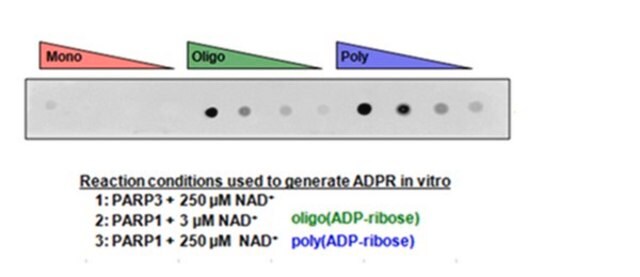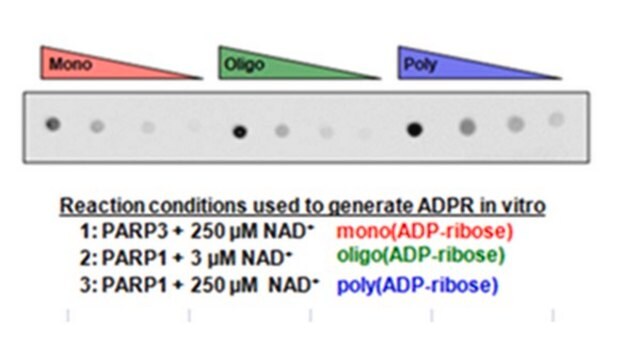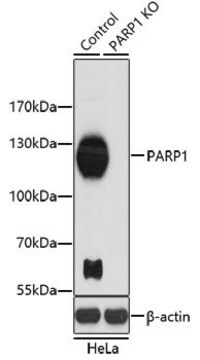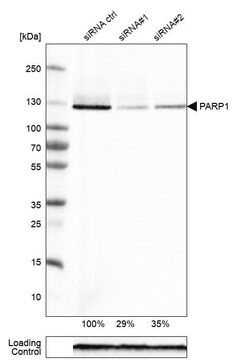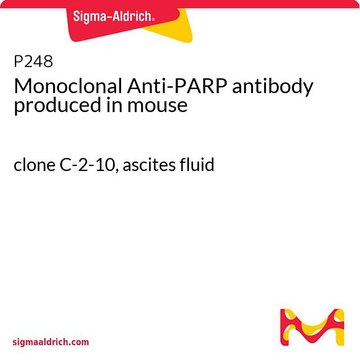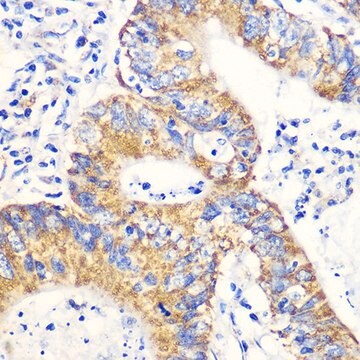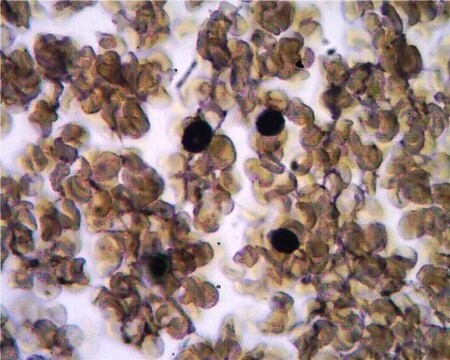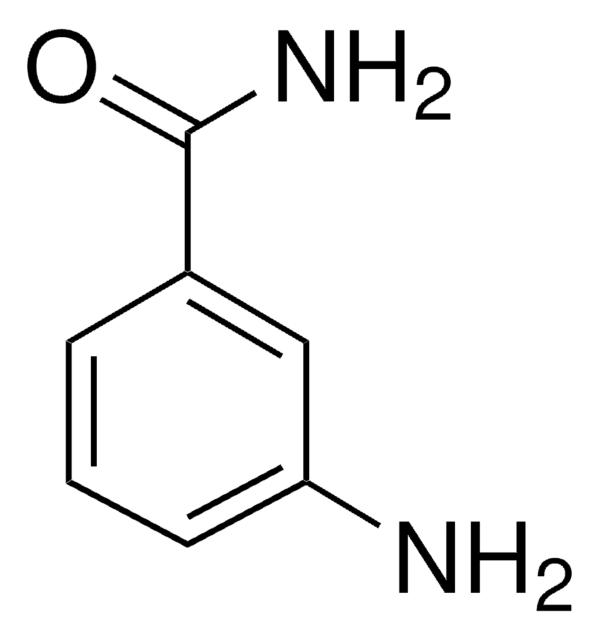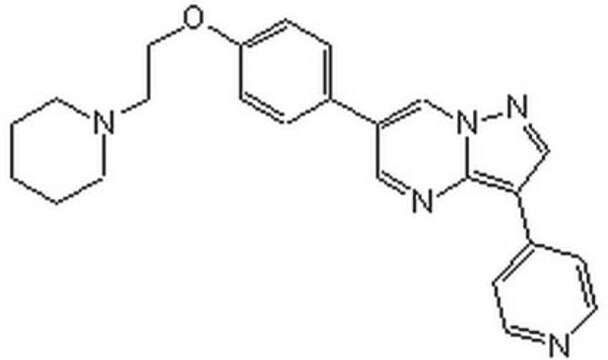MABC547
Anti-Poly ADP-ribose Antibody, clone 10H
clone 10H, from mouse
Synonim(y):
Przeciwciało anty-PAR
About This Item
Polecane produkty
pochodzenie biologiczne
mouse
Poziom jakości
forma przeciwciała
purified immunoglobulin
rodzaj przeciwciała
primary antibodies
klon
10H, monoclonal
reaktywność gatunkowa
human
metody
immunofluorescence: suitable
immunoprecipitation (IP): suitable
western blot: suitable
izotyp
IgG3κ
Warunki transportu
wet ice
docelowa modyfikacja potranslacyjna
unmodified
informacje o genach
human ... PARP1(142)
Opis ogólny
Immunogen
Zastosowanie
Immunofluorescence Analysis: A representative lot was used by an an independent laboratory to detect Poly (ADP-ribose) synthesis on transfected CV-1 cells via indirect immunofluorescence (J.H. Kupper, et al. J. Biol. Chem. (1990) 265:18721).
Apoptosis & Cancer
Apoptosis - Additional
Jakość
Western Blotting Analysis: 1.0 µg/mL of this antibody detected UV treated HeLa cells. Little or no signal observed in untreated HeLa cells.
Opis wartości docelowych
Powiązanie
Postać fizyczna
Przechowywanie i stabilność
Inne uwagi
Oświadczenie o zrzeczeniu się odpowiedzialności
Nie możesz znaleźć właściwego produktu?
Wypróbuj nasz Narzędzie selektora produktów.
Kod klasy składowania
12 - Non Combustible Liquids
Klasa zagrożenia wodnego (WGK)
WGK 1
Temperatura zapłonu (°F)
Not applicable
Temperatura zapłonu (°C)
Not applicable
Certyfikaty analizy (CoA)
Poszukaj Certyfikaty analizy (CoA), wpisując numer partii/serii produktów. Numery serii i partii można znaleźć na etykiecie produktu po słowach „seria” lub „partia”.
Masz już ten produkt?
Dokumenty związane z niedawno zakupionymi produktami zostały zamieszczone w Bibliotece dokumentów.
Klienci oglądali również te produkty
Nasz zespół naukowców ma doświadczenie we wszystkich obszarach badań, w tym w naukach przyrodniczych, materiałoznawstwie, syntezie chemicznej, chromatografii, analityce i wielu innych dziedzinach.
Skontaktuj się z zespołem ds. pomocy technicznej
